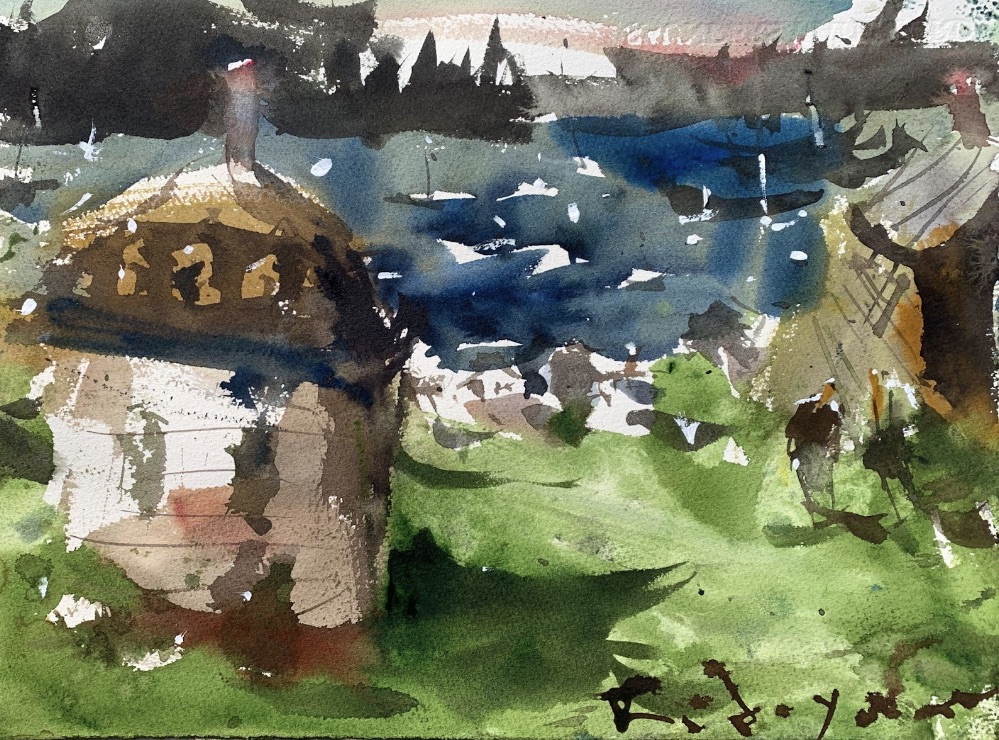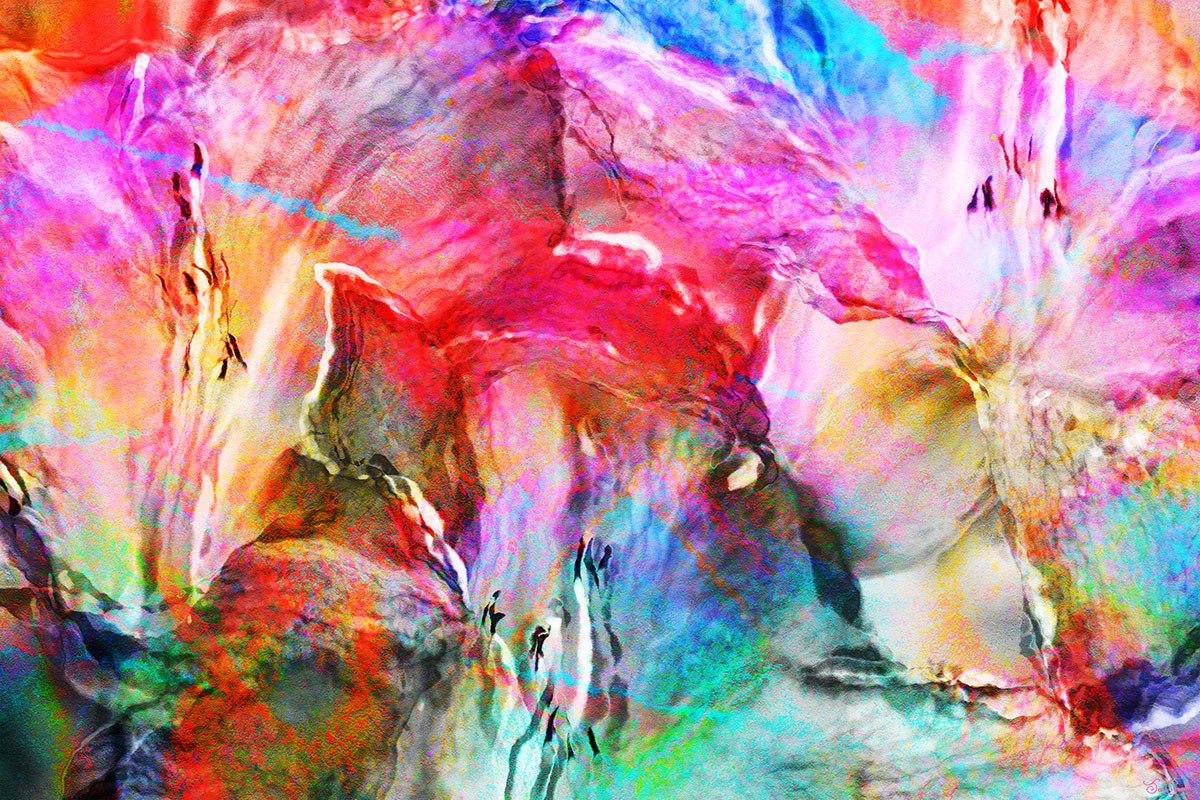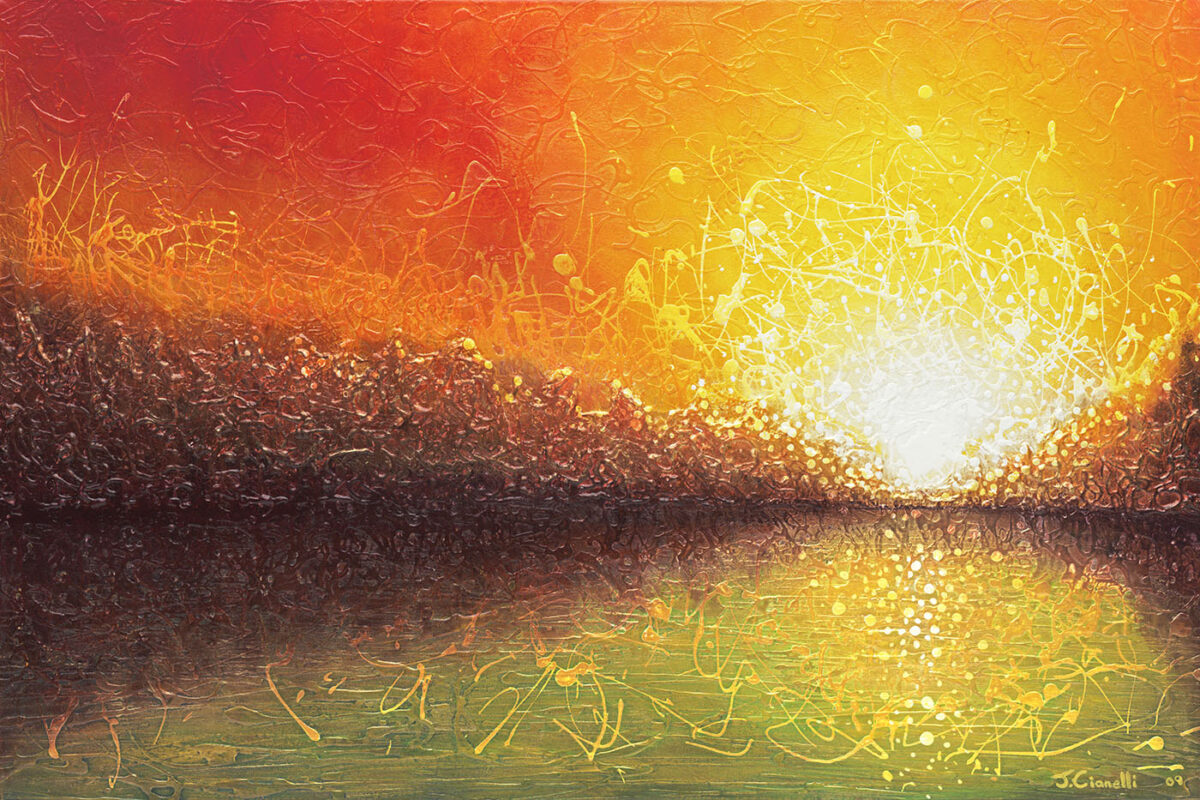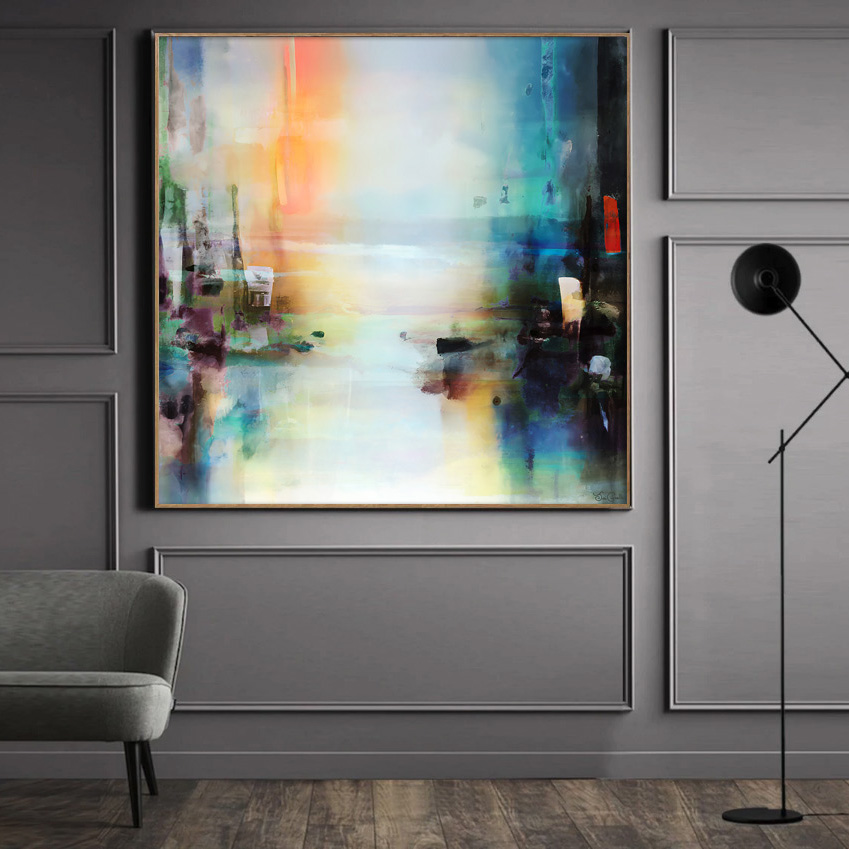A Captivating Journey: Loose Watercolor Seascape Demo
Watercolor painting has a unique charm that captures the essence of the subject in a fluid and expressive way. Seascape painting, with its dynamic waves and serene horizons, provides the perfect canvas to explore the magic of watercolors. In this blog post, we will delve into a step-by-step loose watercolor seascape demonstration, accompanied by a material list and valuable tips for painting expressively.

Music credit: Purple Planet
Recommended Materials List
Before diving into the creative process, let’s ensure you have all the necessary tools at your disposal:
1. Watercolor Paper: Choose a high-quality, heavy-weight watercolor paper that can handle wet-on-wet techniques without warping.
2. Watercolor Paints: Opt for a basic palette of primary and secondary colors, allowing for mixing and blending.
3. Brushes: Have a variety of brushes on hand, including round brushes for fine details and larger brushes for washes.
4. Water Containers: Two clean water containers are essential—one for rinsing your brushes and another for mixing watercolors.
5. Paper Towels: Keep paper towels handy to blot excess water and paint.
6. Masking Tape or Frisket: Use these to preserve white areas or create highlights.
7. Palette: A mixing palette with wells for different colors will aid in blending and creating the desired shades.
8. Pencil and Eraser: Sketch the basic composition lightly and use an eraser to make any adjustments.
Step-by-Step Loose Watercolor Seascape Demo
Step 1: Find a reference that excites you
Begin by finding a photo reference that speaks to you. It can be from your own photos, something you discover browsing the Internet, or perhaps you enjoy going outdoors and painting a scene from life. Lightly sketch the horizon line and any major elements like rocks or boats. Keep the sketch minimal, as you’re aiming for an expressive piece.
Step 2: Wet-on-Wet Background
Wet the paper with clean water, using a large brush. Then, drop in soft washes of blue and green for the sky and sea. Let the colors blend and interact on the wet surface.
Step 3: Building Depth
Once the background is dry, start adding darker tones to the sea to create depth. Use a mix of blues, purples, and greens. Allow the colors to mingle on the paper for a natural feel.
Step 4: Waves and Movement
Using a slightly dry brush, add upward strokes of white for the waves’ crests. Don’t overthink—let the strokes be loose and spontaneous. Sprinkle a pinch of salt onto the wet areas to create interesting textures. Let the salt work its magic as the paint dries.
Step 5: Foreground Elements
Paint any rocks, cliffs, or boats in the foreground. Remember, the goal is to capture the essence, so let your brushstrokes be free and lively. Add shadows and highlights for dimension.
Step 6: Final Details
With a smaller brush, refine details like reflections on the water, ripples, and finer wave lines. Add splatters by tapping a loaded brush against your hand for a splashed water effect.
Tips for Painting Expressively
1. Embrace Imperfections: Allow paint to flow and blend naturally. Don’t worry about perfect lines or flawless color transitions. Imperfections can add character.
2. Loosen Up: Be confident in your brushstrokes. Use your whole arm to create sweeping, bold movements rather than solely relying on your wrist.
3. Color Harmonies: Experiment with analogous or complementary color schemes. Let the colors interact and mix on the paper for a vibrant and lively result.
4. Negative Space: Utilize negative space to emphasize your focal point. Leaving some areas untouched can enhance the overall impact of your painting.
5. Expressive Brushwork: Vary your brushstrokes—thick and thin, soft and sharp. This adds energy and movement to your painting.
6. Limit Detail: Avoid excessive detailing, especially in the background. Focus on capturing the essence of the scene rather than replicating every element.
7. Bold Highlights: Don’t shy away from bold highlights. They can infuse your painting with drama and contrast.
8. Layering Techniques: Layering transparent washes can create a sense of depth. Let each layer dry before adding the next.
9. Let Go of Control: Expressive watercolor painting is about embracing unpredictability. Allow the water and pigments to interact freely.
Conclusion
Creating a loose watercolor seascape is an invigorating journey that allows you to express the beauty of the ocean in your own unique style. Remember, the key is to enjoy the process, let go of perfectionism, and allow the fluidity of watercolors to work their enchanting magic. With the right materials and a willingness to paint expressively, you’ll be able to capture the essence of the sea in a way that is both captivating and deeply personal.
 Written by: Robert Joyner
Written by: Robert Joyner
Robert Joyner is a full-time artist and instructor from Goochland, Virginia. He specializes in blending quality fundamentals with unconventional painting techniques. Robert has a home studio where he creates art and online teaching courses.
Although Robert strongly believes in developing solid fundamentals his approach is typically very random. He likes to put himself in challenging positions that require him to rely on the basics to pull it off. So, instead of creating predictable art he opts to catch lightning in a bottle. This is what excites him!
If you would like to learn how to paint loose watercolors, and abstract style art with acrylic and mixed media, be sure to visit his websites below.
- Crafted By Robert (acrylic and mixed media)
- Watercolor Fanatic


 Written by: Robert Joyner
Written by: Robert Joyner


